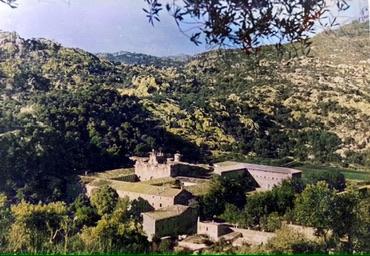How does the Lluc Monastery serve as a pilgrimage site for visitors interested in the Virgin of Lluc?
Similar Topics
lluc monastery
virgin of lluc
black madonna
pilgrimage site
tramuntana mountains
mallorca pilgrimage
religious services
spiritual sanctuary
The Lluc Monastery, nestled in the Tramuntana mountains of Mallorca, is a revered pilgrimage site that attracts visitors deeply interested in the Virgin of Lluc, also known as the Black Madonna. This sacred place has long been a spiritual heart for the island, inspiring pilgrims to journey to its tranquil setting. Central to the monastery’s significance is the small, dark wooden statue of the Virgin Mary, which is believed to possess miraculous powers and has been venerated for centuries. The statue’s unique dark complexion, earning it the title of the Black Madonna, adds to the mystique and devotion surrounding the site.
Visitors drawn to the monastery often partake in the centuries-old tradition of pilgrimage, following well-marked routes through lush pine forests and rugged terrain, a journey that fosters reflection and reverence. Upon arrival, pilgrims have the opportunity to engage in quiet contemplation within the basilica, where the Virgin is enshrined, or to attend the daily religious services dedicated to her. The monastery also serves as a center for religious education and community gatherings, further enriching the visitor's spiritual experience.
Beyond its religious significance, the monastery offers a glimpse into the cultural heritage of Mallorca. The adjoining museum and library provide historical context about the Virgin of Lluc and the monastery’s role in the island’s history. Pilgrims and tourists alike can appreciate the harmonious blend of natural beauty, devotional tradition, and architectural serenity that makes Lluc Monastery a unique sanctuary. For those interested in the Virgin of Lluc, the site is not only a place of faith but also a profound connection to Mallorca’s enduring spiritual and cultural identity.
Visitors drawn to the monastery often partake in the centuries-old tradition of pilgrimage, following well-marked routes through lush pine forests and rugged terrain, a journey that fosters reflection and reverence. Upon arrival, pilgrims have the opportunity to engage in quiet contemplation within the basilica, where the Virgin is enshrined, or to attend the daily religious services dedicated to her. The monastery also serves as a center for religious education and community gatherings, further enriching the visitor's spiritual experience.
Beyond its religious significance, the monastery offers a glimpse into the cultural heritage of Mallorca. The adjoining museum and library provide historical context about the Virgin of Lluc and the monastery’s role in the island’s history. Pilgrims and tourists alike can appreciate the harmonious blend of natural beauty, devotional tradition, and architectural serenity that makes Lluc Monastery a unique sanctuary. For those interested in the Virgin of Lluc, the site is not only a place of faith but also a profound connection to Mallorca’s enduring spiritual and cultural identity.
🧩 Related Questions
Related Question
How does the biodiversity near Mallorca compare to other parts of the Mediterranean Sea?
Related Question
What types of educational workshops are offered at the Lluc museum for families and children?
Related Question
How is traditional agricultural knowledge integrated into Mallorca’s sustainable farming programs?

